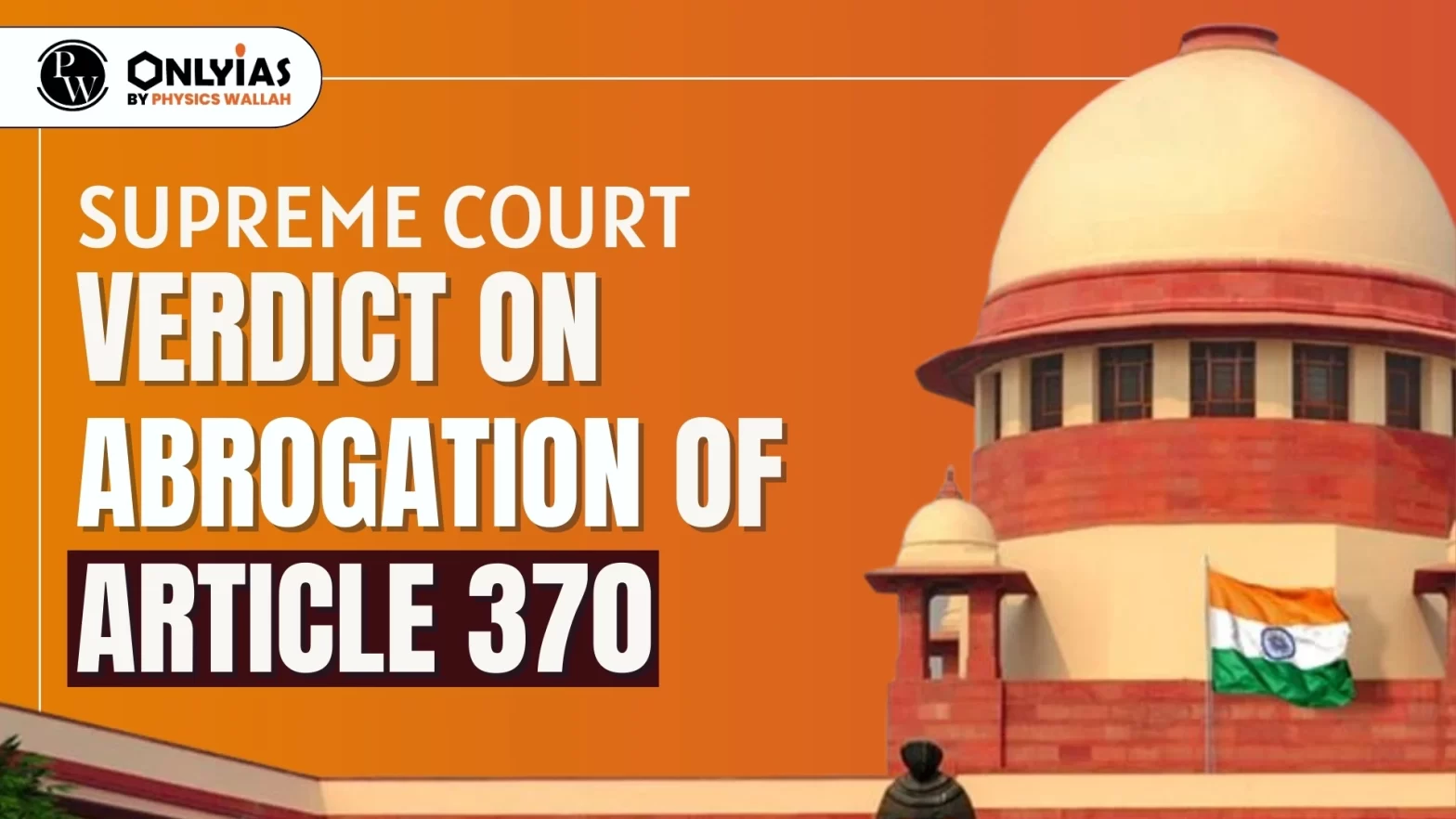Context: This article is based on an Editorial “Pratap Bhanu Mehta writes on abrogation of Article 370 being upheld: Has SC established a dangerous precedent for federalism?” which was published in the Indian Express. Recently, the Supreme Court gave its verdict on the Union government’s 2019 move to amend Article 370 of the Constitution. The court held the Constitutional order that revoked Article 370 as valid and said that it was a step towards the integration of the Indian Constitution.
| Relevancy for Prelims: Article 3, 370, 35A, and 367 of the Indian Constitution, and Supreme Court of India.
Relevancy for Mains: Abrogation of Article 370- Its Impacts and Concerns. |
Abrogation of Article 370 and What did the Centre do in 2019?
- Revocation of Special Status: In 2019, the Government of India, via two Constitutional Orders 272 and 273, abrogated Article 370, and reorganized the state, downgrading the status of Kashmir.
- Later the Centre later moved to reorganize J&K into two Union Territories – Jammu and Kashmir and Ladakh.
- The abrogation of Article 370 has had an impact on militancy-related incidents in the region.
- The government took several measures ahead of the abrogation, including evacuating tourists and students and putting political leaders under house arrest.
What was Article 370 mean?
- To Protect the Special Status: Article 370, is meant to protect the special status of Kashmir and give it more autonomy.
- A Temporary Provision: The 70-year-old Article 370 of the Indian constitution gave special status to Jammu and Kashmir, and was drafted in Part XXI of the Indian constitution titled “Temporary, Transitional and Special Provisions.”
- Article 35A empowers the Legislature of Jammu & Kashmir to define the state’s permanent residents and their special rights and privileges.
Learn more about Article 370 of the Constitution of India, here.
Abrogation of Article 370: Concerns with the Judgment of Judiciary
- No Consultation with Local Representatives: The step has been taken without the express consent of representatives of the people of Jammu and Kashmir.
- The Court is quite emphatic that Article 370 was meant to be transitory in nature; and that the concurrence of the Jammu and Kashmir Legislative Assembly was not required.
- Asymmetric Federalism: The decision seems like a kind of asymmetric federalism.
- Misuse of Provision of President’s Rule: Article 370(3) gave the power to the President to declare that Article 370 shall cease to operate.
- Replacement of Constituent Assembly by Legislative Assembly: Article 370(3) states that a recommendation of the J&K Constituent Assembly was necessary for the President to issue such a declaration. However, the State’s Constituent Assembly was dissolved in 1957.
- And the word Constituent Assembly was replaced by the Legislative Assembly.
- No Specified Date: Rather than taking any action, the Court avoided this issue, by simply accepting an open-ended promise from the government with no specified date that statehood will be restored.
- Not a Democratic Process: If an article is to be amended, the amendment has to be specific to it. But given that Constitutional Order (CO) 272 is the core of the process, it is not appropriate.
- The modification to Article 367 by CO 272 had the effect of amending Article 370 and was ultra vires (Article 370) 1(d).
- It prevents the government from introducing a backdoor amendment to an article of the Constitution by amending another article.
- Article 367 of the Constitution contains some general rules regarding the interpretation of the Constitution.
- Against Values: The decision resulted in the reorganization of the state of Jammu and Kashmir and its downgrading to a Union Territory, which created a new precedent.
- Article 3 allows for changes in the boundaries of states, their names, and even identity. What it does not allow for is changing the status of a state itself, and downgrading it to a Union Territory.
Conclusion:
With the experience of the positive impacts of abrogation, there is no doubt that the decision was required, however, the concern lies with the procedure that was used. In Jammu and Kashmir, there needs to be an honest reckoning with the suffering caused by both state and non-state actors.
![]() 12 Dec 2023
12 Dec 2023

